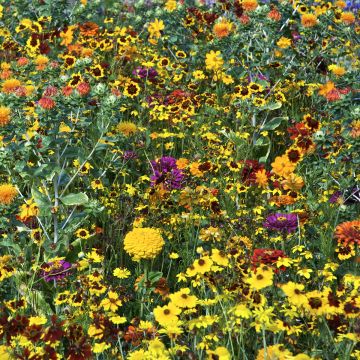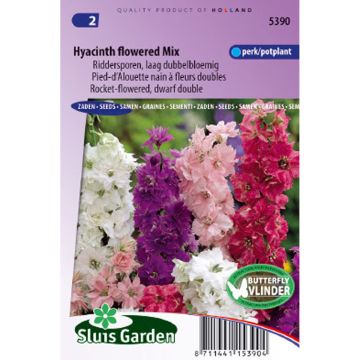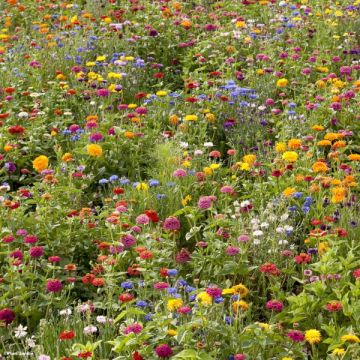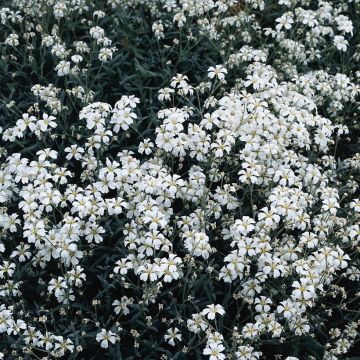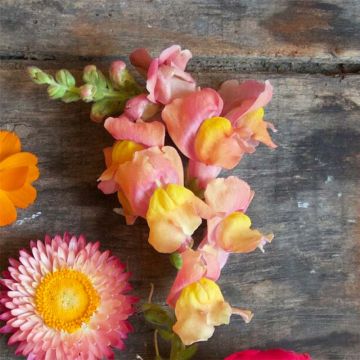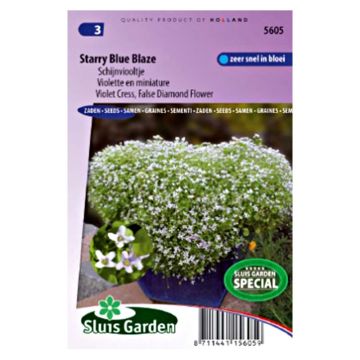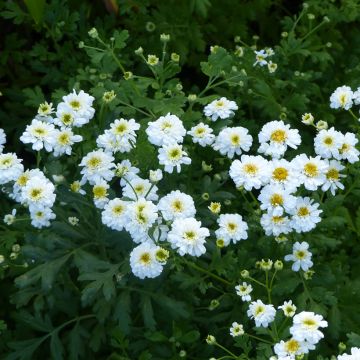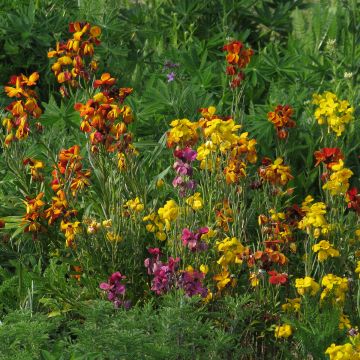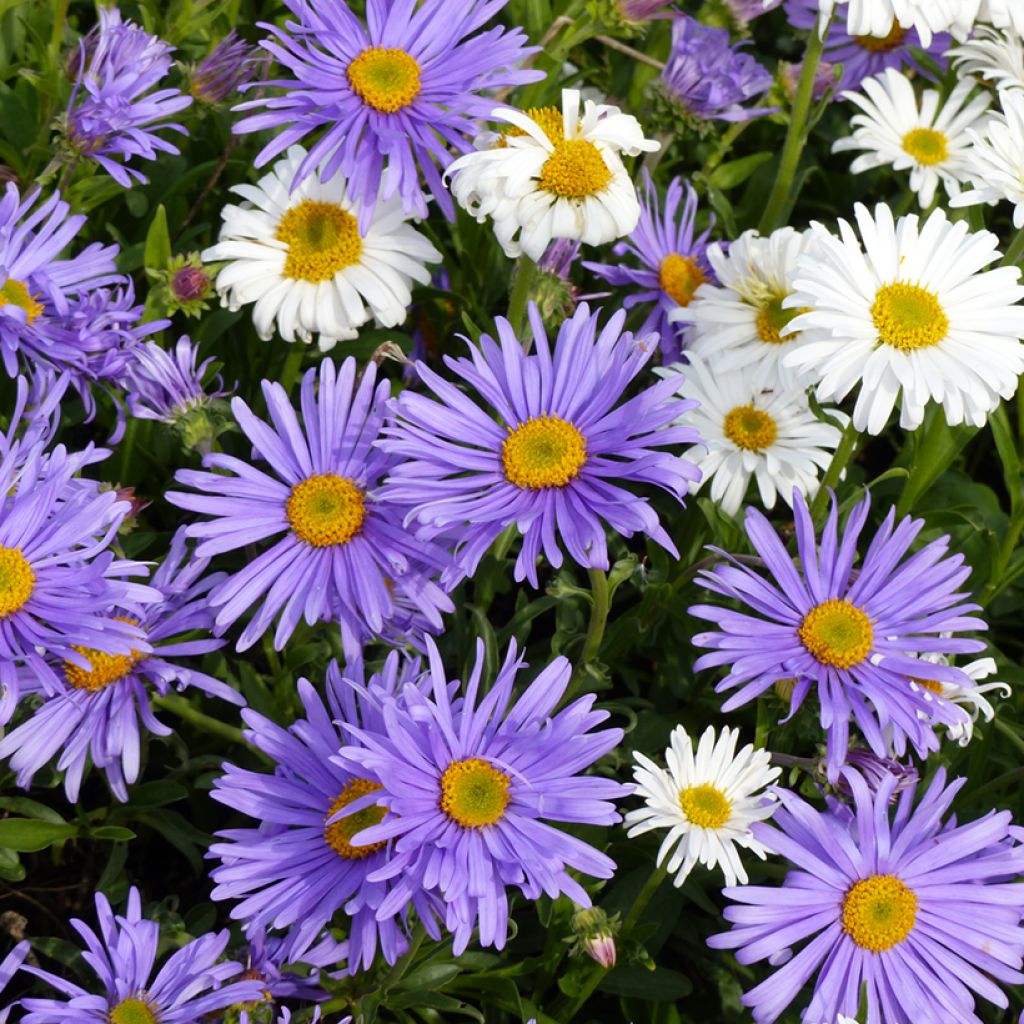

Aster alpinus
Aster alpinus
Aster alpinus
Alpine Aster, Rock Aster, Blue Alpine Daisy
The seeds haven't germinated!
Isabelle B., 30/10/2017
This item cannot be shipped to the selected country
Dispatch by letter from €3.90
More information
Schedule delivery date,
and select date in basket
This plant carries a 6 months recovery warranty
More information
We guarantee the quality of our plants for a full growing cycle, and will replace at our expense any plant that fails to recover under normal climatic and planting conditions.
Seed-only orders are dispatched by sealed envelope. The delivery charge for seed-only orders is €3.90.
Does this plant fit my garden?
Set up your Plantfit profile →
Description
Aster alpinus, also known as alpine aster, is a small perennial native to mountainous regions of Europe. It quickly forms a ground cover on grassy vegetation, ideal for rock gardens. It hides its dark foliage under large, brightly coloured flower heads, which are white to blue-violet with a yellow centre. These last throughout the summer and even into autumn, provided that the sowing dates are spread out. Fully hardy and drought-tolerant, it will thrive in full sun in any well-drained soil, even limestone.
The alpine aster is a plant of the Asteraceae family, which enjoys the sunlight of dry gravelly meadows or the soil of open woodland, up to an altitude of 3000 m (9842 ft). This small herbaceous perennial forms a carpet of dark green leaves that does not exceed 25 cm (9.8 in) in height, spreading as a ground cover over at least 30 cm (11.8 in) in width. Its foliage consists of entire, thin, pubescent leaves. From June to September, erect and pubescent stems arise from these, bearing solitary, brightly coloured flower heads measuring 35 to 45 mm (1.4 to 1.8 in) in diameter in the upper part. The ligules on the circumference are white, blue, lilac or mauve depending on the plant, and always arranged in a collar around a centre consisting of yellow tubular flowers. The flowers are melliferous and nectariferous.
Alpine asters are perfect for rock gardens and borders, where they form remarkable colour carpets. The mix we offer brings the charm of mountain meadows to your garden. Sow it in well-drained soil and it will be sublime in autumn alongside ornamental grasses like Stipa tenuifolia, small miscanthus, briza or Mulhenbergia capillaris. It can also be planted above walls, combined with deltoid pinks.
Report an error about the product description
Flowering
Foliage
Plant habit
Botanical data
Aster
alpinus
Asteraceae
Alpine Aster, Rock Aster, Blue Alpine Daisy
Alps
Planting and care
Sow from February to July at a temperature of 20-30 °C (68-86 °F), on the surface of moist and well-drained compost. Do not cover the seeds. Place in a mini-greenhouse or in a polyethylene bag until germination occurs, which usually takes 21 to 100 days. Keep the seedling in the light, as this facilitates germination. Transplant the plants when they are large enough to handle, into trays or pots of 8 cm (3.1 in). Place them in a cooler and very bright environment for 10 to 15 days before final transplantation. Keep a distance of 30 cm (11.8 in) between each plant. Carry out this last procedure when all risk of frost has been eliminated. Alternatively, directly sow in the ground in May-June. Thin out the seedlings, keeping only one plant every 30 cm (11.8 in).
Sowing period
Intended location
-
, onOrder confirmed
Reply from on Promesse de fleurs
Flower seeds
Haven't found what you were looking for?
Hardiness is the lowest winter temperature a plant can endure without suffering serious damage or even dying. However, hardiness is affected by location (a sheltered area, such as a patio), protection (winter cover) and soil type (hardiness is improved by well-drained soil).

Photo Sharing Terms & Conditions
In order to encourage gardeners to interact and share their experiences, Promesse de fleurs offers various media enabling content to be uploaded onto its Site - in particular via the ‘Photo sharing’ module.
The User agrees to refrain from:
- Posting any content that is illegal, prejudicial, insulting, racist, inciteful to hatred, revisionist, contrary to public decency, that infringes on privacy or on the privacy rights of third parties, in particular the publicity rights of persons and goods, intellectual property rights, or the right to privacy.
- Submitting content on behalf of a third party;
- Impersonate the identity of a third party and/or publish any personal information about a third party;
In general, the User undertakes to refrain from any unethical behaviour.
All Content (in particular text, comments, files, images, photos, videos, creative works, etc.), which may be subject to property or intellectual property rights, image or other private rights, shall remain the property of the User, subject to the limited rights granted by the terms of the licence granted by Promesse de fleurs as stated below. Users are at liberty to publish or not to publish such Content on the Site, notably via the ‘Photo Sharing’ facility, and accept that this Content shall be made public and freely accessible, notably on the Internet.
Users further acknowledge, undertake to have ,and guarantee that they hold all necessary rights and permissions to publish such material on the Site, in particular with regard to the legislation in force pertaining to any privacy, property, intellectual property, image, or contractual rights, or rights of any other nature. By publishing such Content on the Site, Users acknowledge accepting full liability as publishers of the Content within the meaning of the law, and grant Promesse de fleurs, free of charge, an inclusive, worldwide licence for the said Content for the entire duration of its publication, including all reproduction, representation, up/downloading, displaying, performing, transmission, and storage rights.
Users also grant permission for their name to be linked to the Content and accept that this link may not always be made available.
By engaging in posting material, Users consent to their Content becoming automatically accessible on the Internet, in particular on other sites and/or blogs and/or web pages of the Promesse de fleurs site, including in particular social pages and the Promesse de fleurs catalogue.
Users may secure the removal of entrusted content free of charge by issuing a simple request via our contact form.
The flowering period indicated on our website applies to countries and regions located in USDA zone 8 (France, the United Kingdom, Ireland, the Netherlands, etc.)
It will vary according to where you live:
- In zones 9 to 10 (Italy, Spain, Greece, etc.), flowering will occur about 2 to 4 weeks earlier.
- In zones 6 to 7 (Germany, Poland, Slovenia, and lower mountainous regions), flowering will be delayed by 2 to 3 weeks.
- In zone 5 (Central Europe, Scandinavia), blooming will be delayed by 3 to 5 weeks.
In temperate climates, pruning of spring-flowering shrubs (forsythia, spireas, etc.) should be done just after flowering.
Pruning of summer-flowering shrubs (Indian Lilac, Perovskia, etc.) can be done in winter or spring.
In cold regions as well as with frost-sensitive plants, avoid pruning too early when severe frosts may still occur.
The planting period indicated on our website applies to countries and regions located in USDA zone 8 (France, United Kingdom, Ireland, Netherlands).
It will vary according to where you live:
- In Mediterranean zones (Marseille, Madrid, Milan, etc.), autumn and winter are the best planting periods.
- In continental zones (Strasbourg, Munich, Vienna, etc.), delay planting by 2 to 3 weeks in spring and bring it forward by 2 to 4 weeks in autumn.
- In mountainous regions (the Alps, Pyrenees, Carpathians, etc.), it is best to plant in late spring (May-June) or late summer (August-September).
The harvesting period indicated on our website applies to countries and regions in USDA zone 8 (France, England, Ireland, the Netherlands).
In colder areas (Scandinavia, Poland, Austria...) fruit and vegetable harvests are likely to be delayed by 3-4 weeks.
In warmer areas (Italy, Spain, Greece, etc.), harvesting will probably take place earlier, depending on weather conditions.
The sowing periods indicated on our website apply to countries and regions within USDA Zone 8 (France, UK, Ireland, Netherlands).
In colder areas (Scandinavia, Poland, Austria...), delay any outdoor sowing by 3-4 weeks, or sow under glass.
In warmer climes (Italy, Spain, Greece, etc.), bring outdoor sowing forward by a few weeks.






































